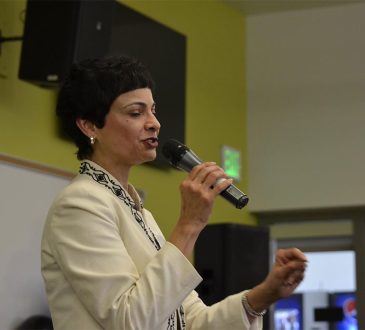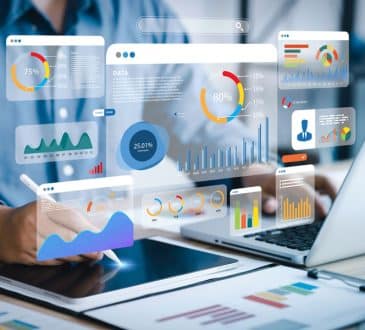Scenario planning – Solving Your Future Business Problems, Big and Small

Scenario planning is not exclusively an enterprise organizational tool. It can be just as effective with high-level global issues like climate change and disease, or even smaller business units and functional issues within an organization. It is a strategic tool for problems, big and small.
Strategy development and the identification and mitigation of related risks occur at different organizational levels. At the enterprise level, the strategy sets the overall direction of vision, mission, and strategic objectives for the entire organization. Likewise, risks at the enterprise level are broader in nature and potential impact and are usually captured as part of an enterprise risk management process and are the chief risk officer’s responsibility. Strategies and risks cascade and translate within the organization to more specific business units, functional and project-related strategies, and more detailed risks, which eventually cascade to individual teams and employees.
Strategy and risk can be all-encompassing at the macro level, and more focused and tactical as you dig down into an organization. But the application of scenario planning is the same.
Scenario planning offers a powerful approach to testing strategies, making complex decisions, enhancing risk management, generating innovative initiatives, building optionality, improving organizational learning, and understanding uncertainty at different organization levels. It’s just the specificity and detail level that increases as you probe down into the organization and toward the front-line employees where the work gets done.
Scenario planning can be powerful and far-reaching in its impact when used at the global macro level. For example, as early as 1942, global automotive giant General Motors created policy committees that scenario planned the geopolitical shape of the future, anticipating increased globalization and a freeing of trade; they planned for international expansion and delivered unprecedented growth.
A more recent example of macro-level scenario planning relates to the Washington-based Centre for Strategic & International Studies (CSIS). In October 2019, two months before the first recorded case of COVID-19 in Wuhan, CSIS decided to study the impact of a global health pandemic. They chose a fictional novel and highly transmissible coronavirus similar to SARS and MERS. The team gathered a group of experts drawn from the fields of bioscience, global health, national security, emergency response, and economics to stress-test the ability of the United States to respond to a global health catastrophe.
The parallels to what unfolded were striking. Their scenario assumed governments would try short-term measures to slow the spread, such as travel bans and border closures, which would not be successful. Like COVID-19, the fictional virus in their scenario spread through international air travel. Enormous economic and political problems and overloaded health care systems would occur. Furthermore, the scenario assumed countries would use fiscal and monetary stimulus to prop up economies. This example was surprisingly real and demonstrates how scenarios and foresight can be powerful tools to imagine the future.
Still, the methodology also lends itself to tackling more specific micro issues, such as investment decisions and competitive situations like introducing new products and services in the market, or building new organizational capability, competency, and capability for the future. For example, Canadian apparel company Arc’teryx rapidly deployed design and manufacturing capabilities to respond to the national demand for PPE during COVID-19, producing medical gowns and temporarily reorienting towards new revenue streams.
Another example of an investment decision influenced by scenario planning is UPS’s acquisition of Mail Boxes. The purchase gave UPS approximately 3,500 retail store locations in the U.S. to complement its network of large hubs used as mail-sorting facilities.
The inputs, scope, process, and resulting outputs vary at each level, but the overarching objective stays the same. Furthermore, the stakeholders involved change from executive-level leaders at the macro level down to front-line employees within a business unit — or, at the micro-level, a specific capital project. Furthermore, scenarios at different levels can be complementary.
Organizations that start at the macro level can later drop down to the industry, enterprise, or organizational level, gaining increasing specificity, detail, and analysis. This helps an organization gain perspective on broader strategic problems or focus more on particular issues, such as a specific risk or a new product, service, or capital project.
British Airways, for example, translated enterprise-level scenarios down to the customer service representatives. They used the scenarios to seek out better links between the airline and its passengers. This was not an original intention, but a customer service agent’s interest in the planning process sparked a new opportunity for improvement.
Furthermore, certain areas of the company’s operations were not originally factored into the planning process. However, they arose when employees from these areas asked questions and stress-tested the scenarios against their own group’s business goals.
The fact that front-line employees were involved in developing the scenarios meant strategies were better validated and more in touch with the business realities facing British Airways. Also, the translation of the scenarios into organizational tactics occurred more easily.
The table below provides an overview of scenario planning at different levels with considerations required to be successful.
In conclusion, it’s vital to allow leaders to choose the appropriate tools for the problems they are trying to solve. The level of scenario planning depends on the level of risk and uncertainty involved and the organizational level under consideration.
Leaders need to classify the strategic problem they are trying to solve upfront: is this a macro-level economic or societal problem, industry or organization-focused, or focused more narrowly on a specific business unit, functional, or project problem?
Although scenario planning is flexible enough to accommodate many different needs, aspects of the process need to be tailored depending on the level at which leaders operate within the organizational system.
Written by Lance Mortlock, author of Disaster Proof: Scenario Planning for a Post-Pandemic Future.
Add CEOWORLD magazine to your Google News feed.
Follow CEOWORLD magazine headlines on: Google News, LinkedIn, Twitter, and Facebook.
This report/news/ranking/statistics has been prepared only for general guidance on matters of interest and does not constitute professional advice. You should not act upon the information contained in this publication without obtaining specific professional advice. No representation or warranty (express or implied) is given as to the accuracy or completeness of the information contained in this publication, and, to the extent permitted by law, CEOWORLD magazine does not accept or assume any liability, responsibility or duty of care for any consequences of you or anyone else acting, or refraining to act, in reliance on the information contained in this publication or for any decision based on it.
Copyright 2024 The CEOWORLD magazine. All rights reserved. This material (and any extract from it) must not be copied, redistributed or placed on any website, without CEOWORLD magazine' prior written consent. For media queries, please contact: info@ceoworld.biz
SUBSCRIBE NEWSLETTER









